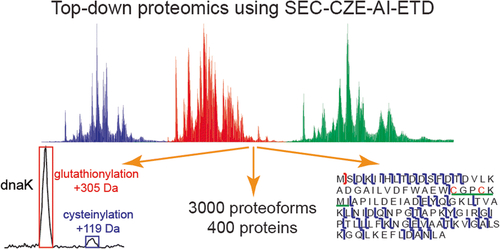Creating efficient and effective peptide fragmentation in tandem MS (MS/MS)
Photoactivation and photodissociation have long proven to be useful tools in tandem mass spectrometry, but implementation often involves cumbersome and potentially dangerous configurations. To remedy this problem, a fiber-optic cable was coupled to an infrared (IR) laser on a mass spectrometer. These advances allow for a more robust, straightforward, and safe instrumentation platform, permitting implementation of AI-ETD and IRMPD on commercial mass spectrometers and broadening the accessibility of these techniques.
This research is described in a recent Analytical Chemistry publication by Trent Peters-Clarke titled Optical Fiber-Enabled Photoactivation of Peptides and Proteins.

